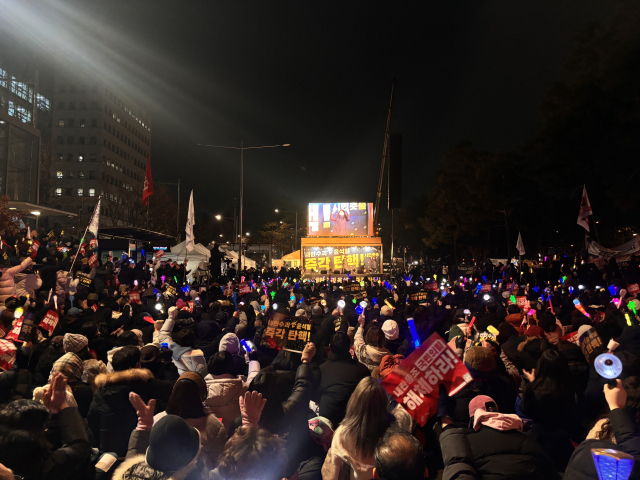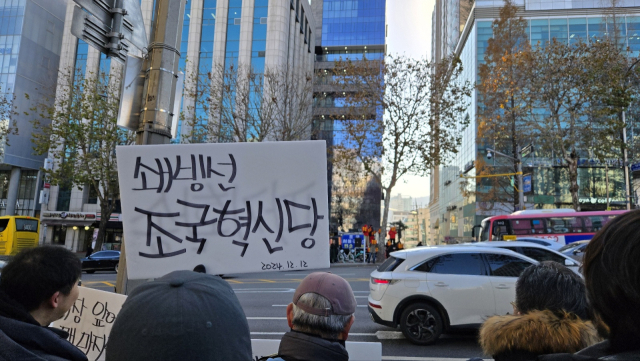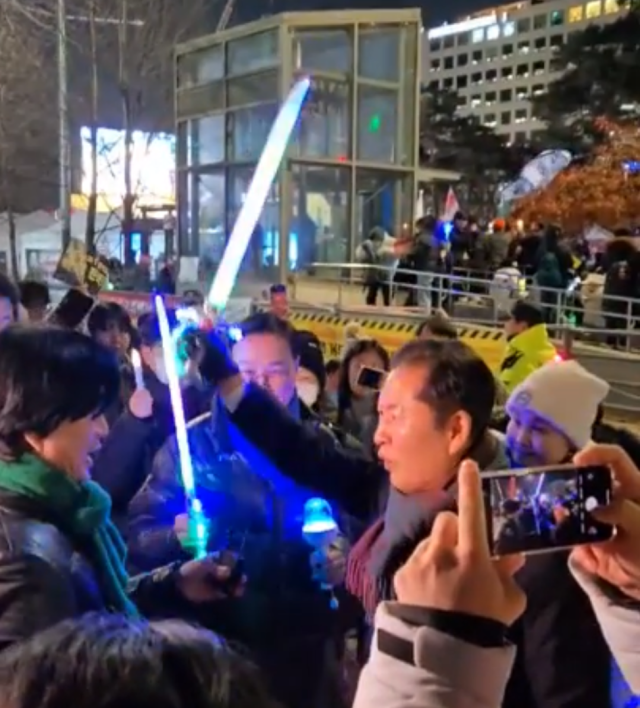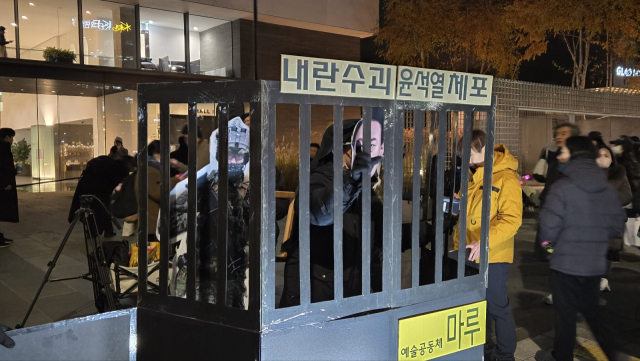[송현칼럼] M&A 붐, 해외기업을 사라
데이비드 전 美 디스커버리캐피털 회장
뉴욕 월가에서는 매일 세계 각지 기업들간 인수합병(M&A) 발표가 난다. 어떤 것은 우호적 합병이고 또 어떤 것은 적대적 인수 시도다. 기업들은 풍부한 글로벌 유동성을 활용, 미래 현금 흐름을 사거나 전략적 지평을 넓히는 데 분주하다.
어떤 경우에는 중국이나 인도ㆍ멕시코 같은 개발도상국가 기업들이 선진국 자산을 산다. 다른 경우 선진국 다국적기업 같은 전통적인 원천으로부터 이런 계기가 나오기도 한다.
이런 활동에는 나름대로 장점이 있다. 산업지도를 다시 그리거나 흡수된 경쟁력 촉매로 에너지를 재충전하기도 한다.
이런 것들이 한국 기업 경쟁력의 글로벌 균형에 어떤 영향을 미칠까. 이런 M&A 열풍은 한국으로도 몰려올 것인가, 그리고 누가 승리자가 될 것인가.
우선 왜 M&A가 일어나는지 알아보자. 여기 2개의 회사가 있다. 같은 분야에서 경쟁하지만 이익률은 기업 A가 기업 B보다 높다. A가 B를 매수한다. 현 시장가치에 프리미엄까지 붙이더라도 A는 B를 통해 더 큰 가치를 창출할 수 있다. B도 A가 시장가치보다 많이 지불한다면 만족이다. 모두가 윈윈하는 것이다. 더 크고 더 능률적인 기업이 덜 능률적인 것을 흡수하고 있다. 결국 적은 수의 더 큰 기업들만이 시장에 남을 것이다. 즉 M&A 활동에 참가하지 않는 기업은 포스트 M&A시대에 보다 어렵고 경쟁적인 환경에 부닥칠 위험이 있다.
지난 10년간의 글로벌 은행ㆍ금융 환경을 한번 훑어보기만 해도 안다. 거대한 통합이 이뤄진 후 글로벌 금융산업은 모든 종류의 서비스를 제공하는 반면 보다 적은 매장을 가진 초거대기업에 의해 지배되고 있다. 중간 정도의 규모에만 만족하는 기업은 점점 이익이 줄고 있다. 변화는 그 변화에 저항하는 것들을 도태시킨다.
M&A의 두번째 유형은 적대적인 경우다. 이것은 잠재적인 매도자가 팔 생각이 없음에도 불구하고 다른 기업이 이 기업을 매수하는 것이다. 이런 매수 형태는 글로벌 경제의 팽창사이클에서보다 축소사이클에서 더 자주 나타난다. 매수 기업쪽의 일반적 특징은 프리미엄이 붙어도 경쟁자에게 통할 수 있는 자신의 가치 평가와 차입 자본을 활용할 수 있는 재정 능력에 있다. 매수 기업은 ‘싼’ 자산을 사기 위해 자신의 ‘비싼’ 통화와 평가를 이용한다.
이런 M&A 상황과 또 한국에서 무슨 일이 일어나고 있는지를 볼 때 우려되는 바가 적지 않다. 대부분의 M&A는 국내 기업들끼리 일어난다. 물론 이것은 논리적이다. 기업들은 국내에서 서로에 대해 위험 및 기회를 더 잘 안다. 상품과 서비스ㆍ자본이 국경 안팎을 자유롭게 돌아다니는 개방경제에서는 핵심 경쟁 요소가 글로벌시장에서 결정된다. 글로벌 경쟁 환경이 국내보다 어렵다는 것을 감안하면 글로벌 변화가 지금은 경쟁력 있는 한국 기업들을 한계기업으로 만들 수도 있다는 것이다.
세번째는 어떻게 한국 기업들이 매력적인 적대적 M&A의 타깃이 되는 가이다. 강한 현금 흐름, 적거나 아예 없는 빚, 세계적인 경쟁제품 등은 한국 기업들을 글로벌 M&A 무대에서 주목받게 하고 있다.
지금까지 이런 시도를 몇 번 봐왔다. 한국 기업들을 대상으로 한 진짜 큰 적대적 인수는 아직 발생하지 않았다. 지금처럼 글로벌 경제성장이 둔화하고 있을 때는 강한 기업이 신산업을 차지하고 시장점유율을 높이기 쉬워진다.
한국은 전략적으로 해외 M&A 가능성을 탐색할 필요가 있다. 선택의 기로에 선 한국은 글로벌 M&A 활동 밖에 머무르면서 외부 변화에 의해 한계 상황을 맞을 수도 있고 아니면 참여해 그 힘으로 새로운 성장을 이룰 수도 있을 것이다.
한국 기업은 자신의 강력한 펀더멘털로 이미 글로벌 경제를 불러들이고 있는 중이다. ‘어서 와서 우리를 사라.’ 만약 이것이 전략적 미래 계획의 일부가 아니었다면 주식회사 한국은 글로벌 M&A 상황과 평가가 한국 경제의 미래를 어떻게 바꿀지 곰곰이 생각할 필요가 있다.
Global M&A Boom
Everyday on Wall Street, there are announcements of major M&A deals by the corporations from around the world. Some are friendly mergers and some are hostile acquisition attempts. With the global liquidity ample, corporations are busily buying future cashflow and expanding their strategic horizon. There is a major consolidation taking place in many industries. More recently, we are seeing increased M&A activity in the steel, energy, financial and technology. In some cases, corporations from developing countries such as China, India and Mexico are buying assets in developed markets. In others, the buying interest is coming from traditional sources—well known multinational corporations from developed countries. The pace of activity has pickup. It is likely to redraw the sector-specific power map and re-energize some sectors with new competitive catalysts thrown in. How will this impact the industries Korean corporation's global competitive balances? Will this M&A push come back to Korea, and who will be winners and losers?
First of all, why does M&A take place? A quick example, there are two companies, A and B, competing in a same sector. Company A has a higher profit margin than B. Even, if A buys B at a premium valuation to the current market value, the company A can extract more value by acquiring B. This deal from B's perspective is that if A is willing to pay more than the market value, they want to think about selling. This is a simple example of everyone in a win-win outcome. Merger of equal usually create value for the both parties. The recent M&A activity among the top steel producers is such a case study. Larger and more efficient producers buying less efficient global market share. At the end of the current M&A cycle, there will be fewer and larger players in the industry. Those who initiated the merger cycle and driving the consolidation get to the main issues for the respective industry. Those who are not engaging in the M&A activity are risking a much different competitive landscape in the post-M&A era. In highly cut-throat global industries, this is a risk that can back a corporation for years. Just look at the global banking and financial industry over the past 10 years. After a massive consolidation, the global financial industry is dominated by a few mega-players that are offering all financial services and much smaller boutique shops. Those who held a comfortable mid-size space has become less profitable in a more competitive industry. The changes that took place in their industry left those resisting the change behind.
Second type of M&A is the hostile one. This is a straight forward case of one company buying another regardless of the desire of the potential seller wants to sell. Usually, the acquiring group looks for synergy and strategic factors, value investments, or asworth when making and identifying acquisition targets. This type of take over is less frequent during an expansion cycle and more prominent during a global down cycle. A common characteristic of an acquiring company is a balance sheet that can handle leverage and its own valuation that is trading at a premium to its competitors. Acquiring companies use its "expensive" currency/valuation to buy "cheap" assets.
When I look at these two types of M&A activity and look at what is taking and not taking place in Korea, I am worried. Most of the M&A activity is focusing internally. This makes logical sense. The companies know each other and know the risks and opportunities better within Korea. However, in an open economy that allows goods, services and capital to flow freely in and out of the country, the key competitive factors that will drive the industries are determined in the global market place. The factors driving the global competitive landscape might be different than the factors driving the M&A activity within Korea. Another factor of concern is that the changes taking place in the global scene might make a very competitive Korean company into marginally competitive companies. The third factor I am concern about is how the Korean companies have become an attractive hostile M&A targets. Strong cash flow, low or no debt, and globally competitive products make Korean companies show up on anyone who is scanning the globe for a take over candidate. We have seen some of these efforts to date. I think the bigger hostile take over news of the Korean companies yet to take place.
As I have been writing in these columns lately, there are rising risks of a global slowdown. When the global growth slows down, it will become a good environment for strong companies to acquire new industries, market share, and future cashflow in the global arena. Value acquisition targets will emerge on a global scene. Time to prepare and study is now. Korea needs to think about going global. It needs to think about outbound M&A possibility as a strategic initiative. As I look at it, Korea does have a choice. It can decide to stay out of the global M&A activity and become marginalized by changes or engage and use its strength to drive the next wave of growth. By staying still with its strong fundamentals, the Korean companies are in fact actually making an invitation to global economy—come and buy us out. If this is not a part of the strategic future plans, the Korea Inc. needs to rethink about the virtues of international M&A picture and assess how it can alter the future of the Korean economy.
입력시간 : 2006/11/19 17:52










